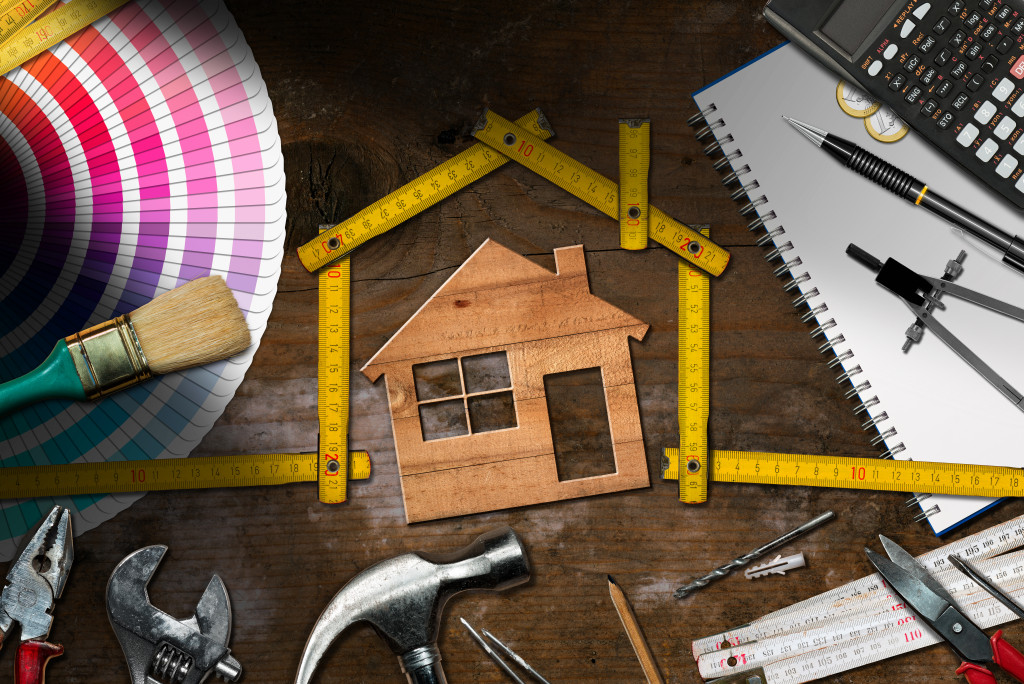- Acquire a property suitable for the dream home, considering its location and potential value appreciation.
- Decide to build it with a developer or DIY with the resources available.
- Obtain necessary funding through loans, investments, and other financial resources.
- Research local building regulations to ensure it’s constructed correctly and safely.
Achieving your dream home is an exciting process, but it also requires careful planning and consideration. You need to be well-versed in the necessary steps to move forward in the right direction. Here are some of the first steps to take when starting to build your dream home:
Acquiring a Property
Finding a suitable property to build is perhaps one of the most critical steps in property development. You won’t have anything to create on if you don’t have the land, so this is necessary to make your dream home a reality. Some of the factors to consider are the following:
Location
Where you build your dream home is of utmost importance. You should consider the convenience and accessibility of the area, as well as its potential for future value appreciation. This factor depends on you and your family’s lifestyle habits, the people you plan to share the house with, and the kind of environment you want to live in.
For instance, if you’re a young adult prioritizing career and lifestyle, you’d likely want a home near your workplace and other establishments. This means looking for properties in urban areas and big cities. On the other hand, if you’re starting a family or looking for stability, searching for suburban houses for sale might be the better option. They come with better security and a quieter atmosphere, perfect for raising children.
Developer or DIY
Once you’ve acquired a property, you must decide whether to work with an established developer or build your dream home yourself. Working with a developer is a great way to ensure your dream home project goes smoothly, but it can be expensive, depending on the scope of your house.
If you want to save money and have more control over the process, you can build your home yourself. Many resources are available online and in print to help guide you through the process. With a DIY approach, you’ll have more leeway for customization, but you must be prepared to face the challenges that come with it.
Obtaining Funding
Once a suitable property has been identified, it’s time to obtain the necessary funding for the project. It is vital to carefully research all potential options before committing any funds and ensure that you understand the terms and conditions of each funding source before proceeding with any agreements.

Defining Your Financial Plan
Developing a detailed financial plan is essential when obtaining funding for your project. This includes outlining projected costs such as land acquisition, construction, labor, and material costs. It should also involve drafting expected returns based on projected revenue streams such as rental income or future property sales once completed. Having these projections readily available makes it much easier when negotiating financing options with lenders and investors alike.
Choosing Financial Resources
This step involves taking out loans from banks or other lending institutions or seeking private investors or venture capitalists who may be willing to provide capital investments if they believe in your project enough.
When deciding which financial resources to use, it’s essential to consider the interest rates and repayment terms associated with each one. It would be best to compare each option’s loan terms and costs to ensure that you pick the one that best suits your financial needs.

Researching Building Regulations
Lastly, it’s essential to research your local building regulations. Every area has different rules and regulations regarding construction and development, so it is necessary to understand the laws and regulations that apply in your area. This will help prevent unnecessary delays or costly mistakes as you build your dream home.
Local building codes and regulations can be found online or at your local government office. Make sure to read through each section carefully, as they can often contain complex language that you may need to consult with a professional about. By doing your due diligence and researching the local building regulations in your area, you can ensure that your dream home is built safely and correctly.
Following these steps, you can start building your dream home on the right track. With careful planning and consideration, you can bring your vision to life. So, don’t delay and start planning your dream home project today. It may seem daunting at first, but the process can be exciting and rewarding if done right.



